
Egyptian Journal of Radiology and Nuclear Medicine
Scope & Guideline
Unlocking the Future of Imaging and Therapy
Introduction
Aims and Scopes
- Diagnostic Imaging Techniques:
The journal emphasizes research on various diagnostic imaging modalities, including MRI, CT, ultrasound, and PET/CT, highlighting their applications in detecting and characterizing diseases. - Interventional Radiology:
Studies focusing on the use of imaging techniques for guiding minimally invasive procedures, addressing techniques, outcomes, and complications related to interventional radiology. - Artificial Intelligence in Radiology:
Exploration of AI applications in enhancing diagnostic accuracy and workflow efficiency in radiology, including machine learning algorithms for image analysis and interpretation. - Oncology Imaging:
Research related to imaging for cancer diagnosis, treatment response evaluation, and staging, with a focus on breast cancer, liver cancer, and other malignancies. - Pediatric Radiology:
Studies addressing the unique challenges and considerations in imaging pediatric populations, including congenital anomalies and the impact of imaging on clinical outcomes. - Emerging Technologies:
Focus on new imaging technologies and methodologies, including advanced MRI techniques, diffusion tensor imaging, and contrast-enhanced imaging, and their implications for clinical practice. - COVID-19 Imaging:
Research investigating the role of imaging in the diagnosis, monitoring, and management of COVID-19, reflecting the pandemic's impact on radiology practices.
Trending and Emerging
- Artificial Intelligence and Machine Learning:
There is a growing trend toward integrating AI and machine learning in radiology, with studies exploring their applications in image analysis, diagnostic accuracy, and workflow optimization. - Advanced Imaging Techniques:
An increase in research focusing on advanced imaging techniques such as diffusion-weighted imaging, T2 mapping, and hybrid imaging modalities, reflecting the demand for more precise diagnostic tools. - Oncology and Precision Medicine:
A significant rise in studies related to oncology imaging, especially those evaluating treatment response, precision medicine approaches, and the use of imaging biomarkers to guide therapy. - COVID-19 Related Research:
A substantial increase in research related to COVID-19, particularly in imaging findings, protocols for managing COVID-19 patients, and long-term sequelae of the virus as reflected in imaging. - Interventional Radiology Innovations:
Emerging interest in innovative interventional radiology techniques, including new approaches for managing complex cases and improving patient outcomes through minimally invasive strategies. - Pediatric Imaging Advances:
A growing emphasis on pediatric imaging, addressing unique challenges and advancements in imaging modalities tailored for children, reflecting the need for specialized approaches in this demographic.
Declining or Waning
- Traditional Radiological Techniques:
There seems to be a waning interest in studies exclusively focused on traditional radiological techniques without integration of advanced imaging modalities or AI, as the field moves toward more sophisticated and comprehensive approaches. - General Case Reports:
There is a noticeable reduction in the publication of general case reports that do not contribute significantly to broader clinical insights, as the journal increasingly prioritizes studies with substantial clinical implications or novel findings. - Static Imaging Protocols:
Research focusing solely on static imaging protocols without comparative analysis against newer techniques or without incorporating advanced imaging technology is becoming less common. - Basic Radiological Education:
While educational content remains important, there appears to be a decline in publications focused solely on basic radiological education without a practical application or advancement in imaging techniques.
Similar Journals
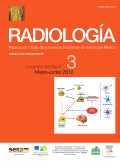
RADIOLOGIA
Advancing the frontiers of imaging and nuclear medicine.RADIOLOGIA is a distinguished journal in the field of Radiology, Nuclear Medicine, and Imaging, published by Elsevier España. With a rich history since its inception in 1961, this journal serves as a vital resource for professionals, researchers, and students interested in the latest developments and innovations in radiological practices. Although it is currently categorized in the Q3 quartile, its contributions continue to shape and advance clinical practices and research in radiology. RADIOLOGIA provides a platform for scholarly articles, reviews, and case studies that underpin the complexities of imaging techniques and nuclear medicine, while also addressing emerging trends and technologies. The journal is indexed with the ISSN 0033-8338 and E-ISSN 1578-178X, reflecting its accessibility to a global audience dedicated to enhancing patient care through advanced imaging methodologies. Readers can find the journal published in Spain and benefit from its commitment to disseminating pertinent research across diverse aspects of radiology.

Japanese Journal of Radiology
Connecting Researchers and Practitioners in RadiologyThe Japanese Journal of Radiology, published by SPRINGER, serves as a premier platform for disseminating cutting-edge research and clinical advancements in the fields of radiology, nuclear medicine, and imaging. With an ISSN of 1867-1071 and E-ISSN 1867-108X, this journal has established itself as a vital resource for practitioners, researchers, and students alike. Renowned for its high-quality peer-reviewed articles, it currently enjoys a respectable impact factor within the Q2 category of Scopus rankings, placing it in the 69th percentile among 333 journals in its field. The journal has seen consistent convergence of research from 2009 to 2024, further underscoring its commitment to advancing the understanding of radiological practices. Importantly, the journal offers Open Access options to facilitate widespread dissemination of knowledge, ensuring that vital research reaches its audience without barriers. Addressed in Japan, the Japanese Journal of Radiology plays a critical role in enhancing the global discourse on medical imaging, making it an essential resource for anyone engaged in this dynamic field.
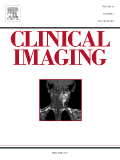
Clinical Imaging
Innovating Radiology Through Cutting-Edge ResearchClinical Imaging, published by Elsevier Science Inc, is a renowned journal dedicated to the field of radiology, nuclear medicine, and imaging. With an ISSN of 0899-7071 and an E-ISSN of 1873-4499, this esteemed publication has established its significance in advancing imaging science since its inception in 1989 and continues to make impactful contributions to the discipline through 2024. The journal holds a prestigious Q2 ranking in the category of Radiology, Nuclear Medicine, and Imaging, reflecting its critical role in bridging research and clinical practice. Currently ranked #113 out of 333 by Scopus, with a notable 66th percentile, it offers a platform for disseminating high-quality research, reviews, and case studies that inspire innovation and enhance imaging techniques. Although it primarily functions as a subscription-based journal, it remains dedicated to accessibility and the dissemination of pivotal findings that inform both academia and clinical settings. Clinical Imaging is essential for researchers, professionals, and students alike, offering insights that shape the future of diagnostic imaging.
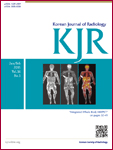
KOREAN JOURNAL OF RADIOLOGY
Advancing Imaging Excellence in RadiologyKorean Journal of Radiology (ISSN: 1229-6929, E-ISSN: 2005-8330), published by the Korean Society of Radiology, stands as a leading international platform for the dissemination of high-quality research and advancements in the fields of radiology, nuclear medicine, and imaging. With a remarkable impact factor and ranked in the Q1 quadrant in its category, this journal showcases cutting-edge studies, clinical investigations, and comprehensive reviews that significantly contribute to the understanding and practice of medical imaging. Researchers, clinicians, and students alike will find the journal an invaluable resource, featuring innovative methodologies, case studies, and essential updates in imaging technology. Since its inception in 2000 and continuing through 2024, the Korean Journal of Radiology remains dedicated to promoting excellence and fostering collaborative research within the global radiology community, underscoring the importance of imaging in modern medicine.
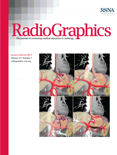
RADIOGRAPHICS
Leading the Way in Radiographic DiscoveriesRADIOGRAPHICS, published by the Radiological Society of North America (RSNA), is a premier academic journal dedicated to the field of radiology, nuclear medicine, and imaging. With an impressive impact factor and recognition in the top quartile (Q1) of both Medicine (miscellaneous) and Radiology, Nuclear Medicine and Imaging categories, RADIOGRAPHICS stands out as a leading platform for disseminating high-quality research and clinical findings. Since its inception in 1985 and projected to run until 2024, the journal has consistently provided essential insights into cutting-edge imaging techniques and advancements in radiological practices, making it invaluable for professionals, researchers, and students alike. Although it does not offer open access, the journal continues to flourish with a robust reputation, ranked 35th in its field according to Scopus, placing it within the 89th percentile of its category. With an unwavering commitment to enhancing the understanding and application of radiological sciences, RADIOGRAPHICS remains a pivotal resource for advancing knowledge and expertise within the medical community.

European Journal of Radiology Open
Bridging Gaps in Radiology Through Collaborative ResearchThe European Journal of Radiology Open, published by Elsevier, has established itself as a pivotal platform for disseminating high-quality research in the field of radiology, nuclear medicine, and imaging since its inception in 2014. This open access journal, holding a commendable Q2 ranking in the esteemed 2023 Scopus categorization, seeks to foster a collaborative environment where researchers, professionals, and students can share innovative findings and advancements. Operating under the E-ISSN 2352-0477, this journal contributes to the broader scientific discourse with a commitment to accessibility and transparency, ensuring that cutting-edge research is available to a global audience. The journal's dual focus on rigorous peer review and rapid publication processes underscores its importance within the academic community, aiming to empower professionals with the latest insights in the dynamic landscape of medical imaging.
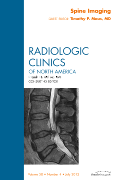
RADIOLOGIC CLINICS OF NORTH AMERICA
Illuminating the Path of Radiologic Excellence.Radiologic Clinics of North America, published by W B Saunders Co-Elsevier Inc, stands as a pivotal resource in the field of medical imaging and radiology. With a solid history dating back to 1963 and converging years extending to 2024, this journal has established itself as a reputable platform for original research, comprehensive reviews, and insightful discussions that advance the knowledge and practice of radiology, nuclear medicine, and imaging. Holding a Q2 classification in both the miscellaneous medicine and radiology categories and positioned within the 56th percentile among its peers, its contributions are vital for both academic research and clinical applications. Although it does not offer open access, the journal remains accessible through institutional subscriptions and is a must-read for researchers, healthcare professionals, and students keen on the latest developments in radiological practices. With a dedicated editorial board and a commitment to the highest academic standards, Radiologic Clinics of North America continues to shape the future of the medical imaging field.

SEMINARS IN ROENTGENOLOGY
Illuminating Radiology Through Scholarly DiscourseSEMINARS IN ROENTGENOLOGY is a revered journal dedicated to the dynamic fields of Radiology, Nuclear Medicine, and Imaging, published by W B SAUNDERS CO-ELSEVIER INC. With a legacy spanning from 1966 to 2024, this journal provides a platform for comprehensive review articles that foster scholarly discussion and advancement in diagnostic imaging techniques and methodologies. Although currently not an open access publication, SEMINARS IN ROENTGENOLOGY holds significant relevance within its field, reflected by its inclusion in the Q4 category in the latest 2023 Journal Rankings and its position in the 20th percentile among its peers. This journal appeals widely to researchers, professionals, and students aiming to enhance their knowledge and contribute to the evolving landscape of radiologic science. Notable for its informative content and expert insights, SEMINARS IN ROENTGENOLOGY continues to serve as an essential resource for those committed to advancing clinical practice and research in radiology.
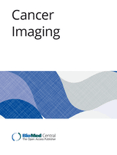
CANCER IMAGING
Transforming Cancer Research Through Cutting-Edge ImagingCANCER IMAGING, published by BMC, stands as a leading open-access journal in the realms of oncology and medical imaging, significantly contributing to the advancement of cancer research since its inception in 2000. With an impressive impact across multiple domains—most notably ranking Q1 in prestigious categories such as Medicine (miscellaneous), Oncology, and Radiology—this journal ensures high visibility and influence within the academic community. As of 2023, it is recognized in various Scopus rankings, securing top positions in the fields of Radiology, Nuclear Medicine, and Imaging, alongside Radiological and Ultrasound Technology. The journal's commitment to open-access publication, adopted in 2014, enhances accessibility for researchers, healthcare professionals, and students alike, fostering an inclusive environment for sharing critical advancements and innovative methodologies in cancer imaging. Set in the vibrant landscape of the United Kingdom, CANCER IMAGING continues to play a vital role in elucidating the complexities of cancer diagnostics and treatment, establishing itself as an essential resource for those pursuing excellence in cancer care and research.
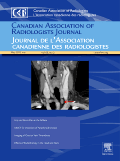
CANADIAN ASSOCIATION OF RADIOLOGISTS JOURNAL-JOURNAL DE L ASSOCIATION CANADIENNE DES RADIOLOGISTES
Elevating Knowledge: Your Gateway to Radiological ExcellenceCanadian Association of Radiologists Journal - Journal de l'Association Canadienne des Radiologistes, published by SAGE Publications Inc, stands as a vital resource in the realms of Radiology and Medicine. With an ISSN of 0846-5371 and an E-ISSN of 1488-2361, this esteemed journal offers insightful research articles and reviews that contribute to the advancement and practice of radiology, benefiting both seasoned professionals and emerging scholars. Holding a commendable Q2 ranking in both the fields of Medicine (miscellaneous) and Radiology, Nuclear Medicine and Imaging, the journal is recognized for its impactful publications, positioning its content within the top 40% of global research outputs. Since its inception in 1973 and continuing through to 2024, it has consistently provided a platform for cutting-edge research and clinical innovations, facilitating knowledge transfer among practitioners and educators. The journal’s significant influence is evidenced by its Scopus rank of #67 out of 333 in its category, placing it in the 80th percentile of academic excellence. Although it does not offer open access, its contributions are critical for advancing the field, making it essential reading for all those invested in the evolution of radiological sciences.